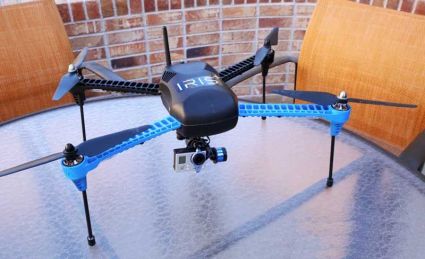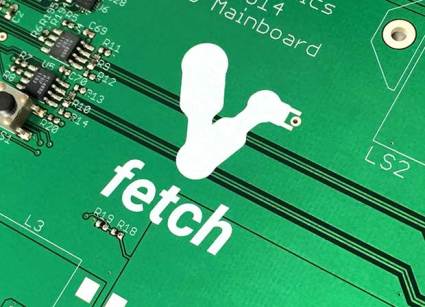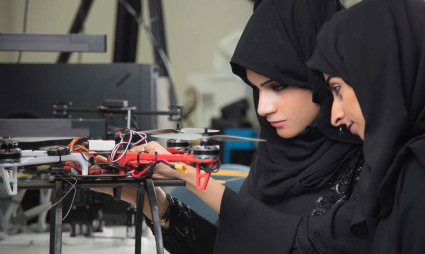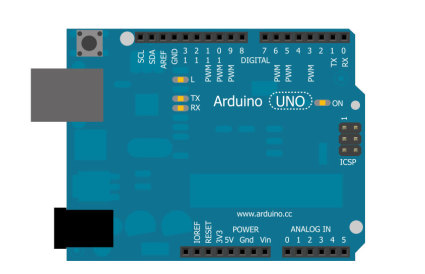
Robohub.org
Robohub Digest Feb. 2015: Fetch funding, Aldebaran shakeup, Boston Dynamics’ Spot, and Drones for Good
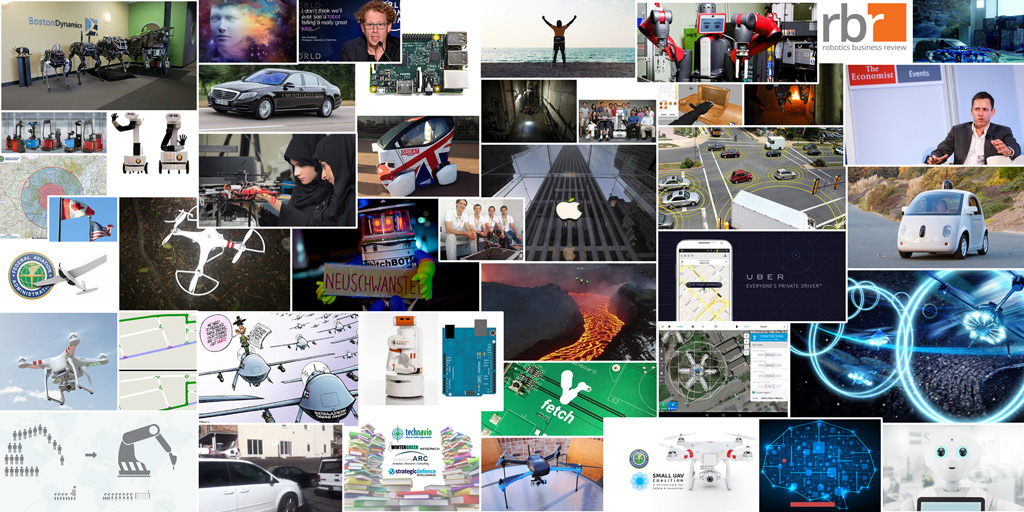
A quick, hassle-free way to stay on top of robotics news , our robotics digest is released on the first Monday of every month. Sign up to get it in your inbox.
Spot on
With robots like BigDog and Wildcat, Boston Dymanics has already made a name for itself in the world of four-legged, life-like robots. This February, the team released a short video of its latest tech, another four-legged robot, named “Spot”. Spot certainly looks like he is related to his predecessors BigDog and Wildcat, but he is much smaller and lighter, and quieter too – his power comes from electricity, rather than an internal combustion engine.
Pass the Pepper
Sobering news from Aldebaran this February. First, SoftBank confirmed that deliveries of Pepper will be delayed until the summer, and then two of Aldebaran’s top executives, Bruno Maisonnier and Jean-Christophe Baillie, left the company. The reasons for the shakeup are not yet completely clear, but a story in the French startup blog Rude Baguette, with information obtained from anonymous current and former employees of Aldebaran, suggests that internal turnover and disorganization were important factors. It was sad month for France’s startup community.
Business and funding
Beyond Aldebaran, there were a few downs and mostly ups for robotics business news this February. While Intuitive Auotmata unfortunately closed its doors this month, SeeGrid had its reorganisation plan approved by a judge and is now looking to get back on its feet.
February also saw some headliners: Qualcomm acquired Kmel Robotics, a company famous for its flying quadrocopters; 3D Robotics raised $50M in a series C funding, also mostly from Qualcomm; and Fetch Robotics was granted $3 million to support the roll-out of its mobile platform and manipulator.
Plus, a number of new research reports released this month are predicting growth for the industry, covering a wide range of robotics markets, including exoskeletons, pharmacy automation, and mobile robots.
On the move
The $3 million investment in Fetch Robotics might just be the tip of the iceberg in terms of excitement for mobile manipulators. Spanish company PAL Robotics released its very own mobile manipulator “Tiago” (take it and go); mobile robots and mobile manipulators featured prominently in RBR’s latest Top 50 list; and Silicon Valley Robotics Director Andra Keay predicts that 2015 will see more mobile manipulators coming to market.
And while mobile robots usually have wheels to get around, one very special robot has proven that you don’t need wheels to get around. HitchBot has been hitchhiking its way across Germany this month, visiting Neuschwanstein Castle, joining the Rose Monday Parade in Cologne, and crashing a wedding near Frankfurt. Now safely back in Munich with some of its creators, we are sure that HitchBot has already started to plan its next adventure.
Whitehouse drone crash fallout

Drone crash: who is liable?
At the end of last month a Phantom drone crashed at the Whitehouse; shortly thereafter drone maker DJI announced a mandatory firmware update that would prevent its drones from flying near downtown Washington. Legal experts questioned the move, suggesting that by the company may be opening itself up to liability concerns, and then DJI rolled back the update amid bug concerns.
FAA leak and proposed regulations
A leak of proposed FAA drone regulations this month prompted a surprise weekend conference call by the organization to release its first official proposal for how the FAA will govern commercial UAVs. In the aftermath, first reactions came from many stakeholders, including the small UAV Coalition, the Professional Society of Drone Journalists, and the Center for Robot-Assisted Search and Rescue to name a few. While there was general hopefulness toward the proposed rules, key concerns about lack of clarity remained, including limits on flying after dark, beyond visual line of sight, and over private property. A further criticism was that the proposed rules do not reward safe drone use – something Canadian regulators do. The public has 60 days to comment on the proposals.
Uber gets into robocars
Back on the ground, cab service Uber announced a robocar collaboration with Carnegie Mellon University. The move has caused speculation that Uber plans to compete with Google, just as Google itself seems to be planning a cab-hailing service using its own driverless vehicles. Others argue that the companies are unlikely to split just yet, given that much research is still needed before we will be hailing a self-driving cab from the curb.
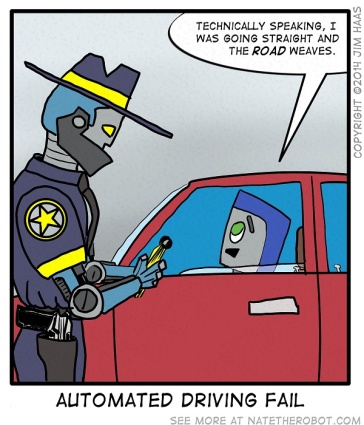 Another company that could soon join in the robocar race might be Apple. Amind claims that Apple has started looking at self-driving cars surfaced rumours that sensor-laden vehicles spotted in the US are operated by the company. More robust evidence that Apple is moving into the transport market came later this February from the Wall Street Journal, which reported that Apple is apparently working on an electric vehicle. Although this car may not be self-driving (yet), the tech giant is clearly expanding beyond its traditional remit of producing small consumer electronics.
Another company that could soon join in the robocar race might be Apple. Amind claims that Apple has started looking at self-driving cars surfaced rumours that sensor-laden vehicles spotted in the US are operated by the company. More robust evidence that Apple is moving into the transport market came later this February from the Wall Street Journal, which reported that Apple is apparently working on an electric vehicle. Although this car may not be self-driving (yet), the tech giant is clearly expanding beyond its traditional remit of producing small consumer electronics.
In other robocar related news, the Lutz pod, a driverless car produced in the UK may soon be roaming the streets of Milton Keynes and Greenwich. Discussions and research are on-going as to whether self-driving vehicles should be using V2V (vehicle to vehicle) communication, how AI might be used to programme safety into robocars, and what kind of sensors are required for various levels of autonomous driving.
Fire fighting bots and other robots for good
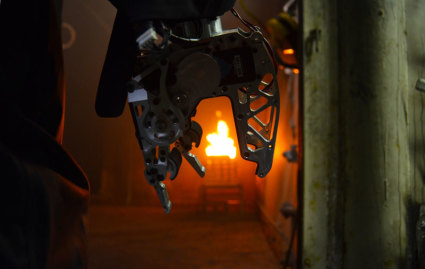
SAFFiR’s hands are strong enough to grip and hold a firehouse blasting water. Source: Virginia Tech.
February saw the release of a video showing a humanoid robot on board a US Navy ship extinguishing an actual fire. The adult-sized “SAFFiR” robot, built by students from Virginia Tech, could walk, stop, turn, locate the heat source of a fire behind a door, and (once the door opened) take a hose and blast the flames with water, all without falling or stopping. And in a related project CMU researches released details of an autonomous drone that can fly through narrow, dark and smoke-filled corridors to map fires and find victims. The drone and SAFFiR could, in future, be linked up as a team to support human fire fighters.
Other good news stories include that of Robots For Humanity (R4H.org) and Henry Evans, who was left paralysed after a stroke in 2002 and now uses robotics to help him live his life as independently as possible. potential. Or, DARPA’s HAPTIX project, which is developing prosthetic hands that can actually ‘feel’. And let’s not forget that Baxter the robot has now been recruited to help fight the Ebola outbreak in West Africa by looking at ways that robots could take over high risk activities, such as handling contaminated materials, from health workers.
Amidst all these good works, the United Arab Emirates (UAE) announced the winners of its ‘Drones for Good’ competition (with Flyability winning the $1M prize with its crash-resilient drone “Gimball”), following up shortly thereafter with an announcement for a spin-off $1M competition ‘AI and Robotics for Good’. The UAE is on a robotics roll this month, also announcing the new $5M Mohamed Bin Zayed International Robotics Challenge (MBZIRC), as well as opening a brand new science and technology museum in Dubai with a focus on robotics, drones and robocars.
Forget the singularity, let’s talk multiplicity
This month Google’s DeepMind team published an article in the journal Nature this month introducing their “novel artificial agent”, which is a combination of a deep neural network with a reinforcement-learning algorithm. The publication of DeepMind’s article coincided with a podcast on the history of machine learning and a livestream event with Rodney Brooks, Abhinav Gupta, Andrew McAfee on AI and the rise of robots.
You may recall that AI was a hot topic last month at the World Economic Forum in Davos. Some videos from this event were released on YouTube this month, including one with Ken Goldberg – don’t miss Audrow Nash’s interview with Ken, where he describes his impressions of the event.
STEM and Education
In STEM and education news, the popular Rasberry Pi platform released a Pi 2 Model B, which offers hugely increased performance compared to the Pi 1 Model B+. While the release came as a surprise to many, it marks a new era for Rasberry Pi, as the increased performance means it has now become a usable PC.
And at Robohub we have just launched a new Arduino tutorial series. Look for new posts every 2-3 weeks.
Events to watch out for in March
- Human-Robot Interaction (HRI) – Mar. 2-5 – Portland, OR, USA
- AUVSI’s Unmanned Systems Europe – Mar. 3-4 – Brussels, Belgium
- European Robotics Forum – Mar. 11-13 – Vienna, Austria
- SxSW – Mar. 13-22 – Austin, TX, USA
- AUTOMATION – Mar. 18-20, Warsaw, Poland
- Skolkovo International Robotics Conference – Mar. 20-22 – Moscow, Russia
- Automate – Mar. 23-26 – McCormick Place, United States
- Ferrara Drone Show – Mar. 28-29 – Ferrara, Italy
tags: Robohub Digest




